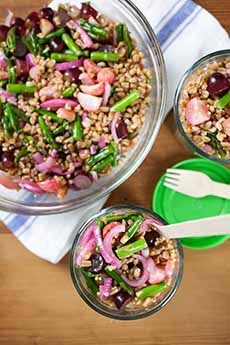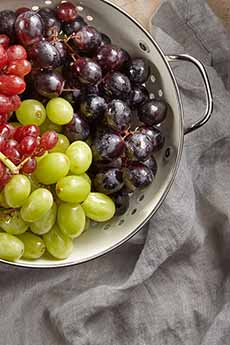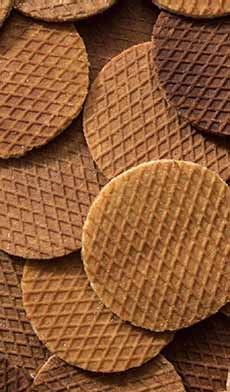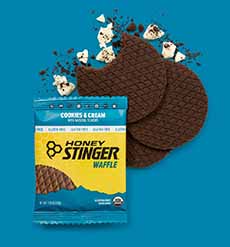|
October 14th is National Dessert Day. We thought we’d focus on the origin of sugar today, because where would dessert be without it?
But first: our Top 10 desserts and 200 other dessert holidays.
WHAT IS DESSERT?
Dessert can be a naturally sweet food like fruit, or a prepared confection: cakes, cookies, custards, fruit salads, gelatins, ice creams, pastries, pies, puddings, sweet soups, tarts, and more. Sometimes a sweet wine or liqueur is served; sometimes the dessert consists only of a glass of wine or liqueur. If you define dessert as a sweet course at the end of the meal, then dessert is a relatively recent concept, dating to the 17th century.
There were fruits, but the truly sweet food started with honey, which was gathered by prehistoric man to please his sweet tooth.
But sweet foods, from honey to dates to other fruits, were a long way from becoming “dessert.”
Dried fruit and honey were probably the first sweeteners used in most of the world.
Way back in ancient India and Mesopotamia, sweet foods—often dried fruits and nuts rolled in honey—were so valued that they were left at altars to the gods [source].
The Persians loved their sweets. Herodotus (484 to 425 B.C.E.), the Greek historian who wrote extensively on the Persian Empire, noted that the main Persian meal was simple, but the Persians would eat many sweet foods afterward [source].
The oldest written reference to honey dates back to Egypt in 5500 B.C.E., and references to honey abound in antiquity.
But honeybees are far older than man’s historical record—written, painted, or otherwise. Honeybees originated in Southeast Asia some 40 million years ago. Apis mellifera, known as the Western honeybee, probably originated in Tropical Africa and spread from there, north to Europe and east to Asia.
So Africans, Middle Easterners, and Europeans had their honey until sugarcane arrived. The spread of sugarcane around the world was essential to the development of dessert.
THE ORIGIN OF SUGARCANE
Sugarcane was originally domesticated around 8000 B.C.E. in New Guinea, an island in the eastern Malay Archipelago, north of Australia.
Originally, people chewed on the raw sugar cane stalks to enjoy the sweetness of the juice inside.
From New Guinea, knowledge about sugarcane slowly spread east across Southeast Asia until it reached what is now India, where the first organized production of sugar began [source].
Refined sugar appears around 500 B.C.E., when residents of India began to make sugar syrup from the cane juice.
They heated, then cooled it to form crystals that were easier to store and transport than the cane juice. These crystals were called khanda, which is the source of the word candy.
Sugar and sugarcane were traded, making sugar available to Macedonia by 300 B.C.E. and to China by 600 C.E.
In the 6th century B.C.E., the Persians invaded India and marveled at the “reed which gives honey without the need for bees” [source].
In the reign of Alexander the Great in the 4th century B.C.E., sugarcane reached the Middle East, where it became a crop.
SUGAR COMES TO EUROPE
Sugar was little known and rare in Europe until the twelfth century or later, when the Crusades and then colonization spread its use.
Europeans began to manufacture sugar in the Middle Ages, and as sugar became more affordable, more sweet desserts became available.
In the Middle Ages in England, France, Italy, and other countries in Europe, dessert as a sweet course following a savory meal still didn’t exist.
Medieval Europeans sweetened their food with honey up to the eleventh or twelfth century. When sugar arrived in 12th century Europe, it was so costly that only the wealthy could indulge, and usually on special occasions like banquets.
There was still no tradition of a dessert to conclude a meal, either in Europe or other parts of the world [source].
Yes, sweets were around: candied nuts and fruits, and other candies and confections.
But even among the elaborate meals of the wealthy where there was plenty of sugar, there was little order to the incorporation of sugar in the procession of a meal—with an emphasis on order.
At the banquet table, sweet cakes, pastries, custards, jellies, candied nuts, fruits and flowers, and other sweets were interspersed with the courses of meats, seafood and vegetables.
These sweets served as palate cleansers between courses, and were believed to be effective digestive aids and fending off “dispelling wind,” as noted by one particularly eloquent 17th-century Frenchman [source].
Perhaps most disturbing to modern palates, sugar was used as a seasoning for savory dishes!
Sprinkling sugar on a stew or a cooked bird, or presenting a course of eel in marzipan or in sweet custard, were ways to flaunt one’s wealth.
Sugar may not have been the tastiest garnish for savory foods, but it looked and tasted “rich,” if not particularly delicious.
Like all trends, it wouldn’t last forever, but sugar in sweet dishes—cakes, custards, pies, puddings, etc.—remained a status symbol.
And talk about status: The creation of large sugar sculptures to grace a feast was first created for a ball in honor of Henri III of France at the Palazzo Ducale in Venice, in 1574.
That’s a fortune in pricey sugar. (We’re guessing that after the banquets, it was recycled back into the kitchen.)
We had to wait another century for the concept of dessert as a course began to emerge. Until then, let’s take a look at:
SUGAR COMES TO THE AMERICAS
From the late 15th century, shortly after Christopher Columbus’ first voyage to America in the 15th century, sugarcane plantations were developed in the West Indies and then in South America, particularly in Brazil.
Sugar became the top colonial commodity, planted and harvested by enslaved Africans. This sugar harvest supplied Europe.
In 1757, beet sugar was discovered by Andreas Sigismund Marggraf of Berlin, who was a pioneer of analytical chemistry.
But it was not turned into a financially viable crop.
In the early 19th century, England enacted a blockade on sugar from the West Indies, following England’s abolishment of slavery.
Napoleon ordered sugar beet to be grown on French soil. In 1811, the first economically viable sugar beet processing plant was built in France.
European-grown beet sugar became affordable and widely consumed by the late 19th century [source].
Now, back to dessert.
DESSERT BECOMES A COURSE
According to Saveur, dessert as a distinct course may owe its birth to the salons that began in the late Renaissance, where people of culture and means would gather to drink tea and chat.
Their chefs took the opportunity to prepare single-portion sweets to accompany the tea. Thus, èclairs, petit-fours, and tartlets became popular—and an avenue to eat indulgent cakes and pastries outside of throwing a party.
At the same time, a developing trend toward dinner service away from “service à la française,” French-style service, which involved setting a variety of dishes on the table at the same time, toward “service à la russe,” Russian-style service, which presents a meal in courses.
Service à la russe often culminated in a final dessert dish of a small pastry with a cup of tea or coffee.
THE WORD “DESSERT”
The word “dessert” derives from the French word desservir, meaning “to clear the table.” The term first appears in the 16th century.
It referred to a course that was served after the table had been cleared of other dishes.
In France, this might have been a sweet course; but it should be noted that instead of a sweet ending to a daily meal, the French often ended their meal with a cheese course, with sweetness perhaps from fresh or dried fruits. Sweet baked desserts were often reserved for Sunday meals and special occasions.
The first known use of the term “dessert” in English was in 1600. It appeared in a health education manual entitled “Naturall and artificial directions for health deriued from the best philosophers, as well moderne, as auncient” By William Vaughan, Master of Artes, and student in the ciuill law. Natural and Artificial Directions for Health,” by William Vaughan.
Yes, that’s the spelling.
You can read parts of it here.
Happy National Dessert Day!
|



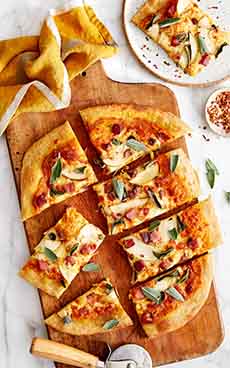
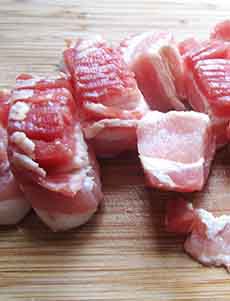
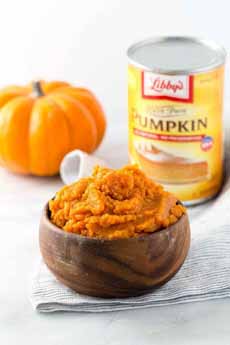

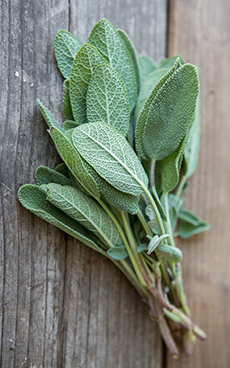



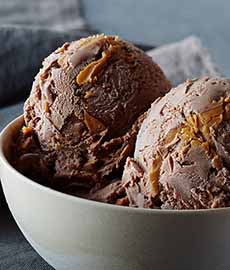
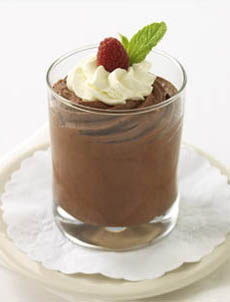

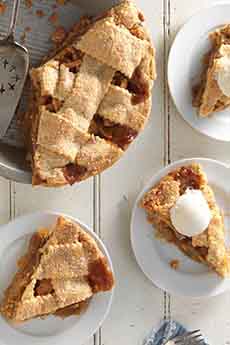
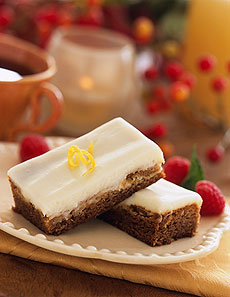
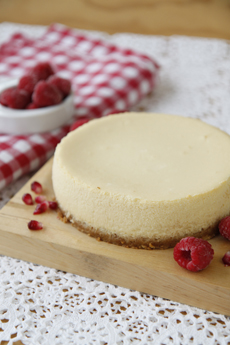
 [1] It’s easy to whip up a quart of pickled grapes for yourself or as a food gift (photo and recipe ©
[1] It’s easy to whip up a quart of pickled grapes for yourself or as a food gift (photo and recipe © 

